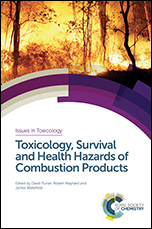Our Green Chemistry Series has now been running for just over a decade. To mark this anniversary we asked the Editors of some of the first books in the Series whether they wanted to re-visit the topics of those books for an update. Professor Roberto Ballini from the University of Camerino was one such Editor. Here he has written a few words about his new book Green Synthetic Processes and Procedures.
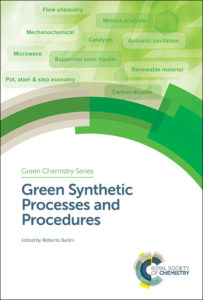 Back in 2009 the RSC commissioned me to act as editor for the book Eco-Friendly Synthesis of Fine Chemicals, a book dedicated to the concepts of Green Chemistry. The Book aroused a lot of interest and a very large number of copies were sold.
Back in 2009 the RSC commissioned me to act as editor for the book Eco-Friendly Synthesis of Fine Chemicals, a book dedicated to the concepts of Green Chemistry. The Book aroused a lot of interest and a very large number of copies were sold.
A decade has passed since then, and there has been great growth in the field of Green Chemistry, both in the Industry and Academia. Providing a thorough overview of the current green synthetic topics, from biocatalysis to sonochemistry, the RSC once again asked me to organize, as Editor, the publication of a new book with the most recent advances in the field of Green Synthetic Processes and Procedures. The book will be published in July 2019 and is intended as a useful resource for any chemist wishing to design cleaner and safer procedures.
Organized in fifteen chapters the book is dedicated to several of the main topics of Green Chemistry and is written by leading experts in the field.
- Chapter one provides an update on the concepts, the sustainability values and the new metrics of Green Chemistry.
- Chapter two treats the recent developments in One-Pot reactions, including cascade reactions, stepwise reactions and multicomponent reactions.
- Chapter three deals with the utility of step, cumulative and global E-factor and PMI (process mass intensity) metrics for the analysis of material efficiency with synthesis plans, with particular attention to pharmaceuticals.
- Chapters four and five report the advantages of Flow Chemistry.
- Chapter six illustrates a series of recent examples of combining multicomponent reactions with bio-catalysis and the use of renewable starting materials derived from biomass.
- Chapter seven aims to stimulate further progress in organic synthesis by describing harmless and green technologies, since hydrodynamic cavitation and ultrasound create unique, high-energy microenvironments.
- Chapters eight and nine describe the application of mechanical energy (mechanochemistry) to achieve chemical transformations for the preparation of important targets, including heterocycles, pharmaceuticals and agrochemicals.
- Chapter ten is devoted to synthesis under microwave heating conditions and neat reactions. In fact, the use of organic synthesis is one of the main causes of pollution and risk for humans. The use of microwave (MWs) for the heating of mixtures, the combination of solvent-free protocols and MWs-assisted organic synthesis is therefore the most challenging tool to abide by the 12 green principles. This chapter reports on recent reports, benefits and challenges of synergies between MW heating and neat reactions.
- Chapter eleven deals with the synthesis of phenolic compounds by catalytic reactions and process is examined, with special focus on sustainability issues. Considerable steps forward have been made with the development of phenols and diphenols
- Chapter twelve treats the micellar catalysis with transition metal complexes as one of the major tool in the organic chemist since it can be considered an important technology that allows the use of water as the reaction medium. The range of reactions in which micellar media can be successfully used, is very wide.
- Chapter thirteen is dedicated to the advantages offered by the use of materials based on ionic liquids (ILs). Materials based on ILs can overcome many drawbacks observed in the classical Ionic Liquids and provides a substantial reduction in the amount of IL required for a given application. This decreases accordingly the associated cost, facilitates handling and manipulation and greatly mitigates the potential environmental risks.
- Chapter fourteen collects and describes representatives of the current literature on the use of CO2 and organic carbonates for sustainable valorization of renewable compounds.
- Chapter fifteen shows the breadth of transition metal-catalyzed methods (the catalyst can be recovered and recycled) in water for the addition of terminal alkynes to a variety of electrophiles.
Thus the book provides a broad spectrum of recent advances and recent trends in sustainable synthesis. The volume will be very useful both for those involved in scientific research and in the dissemination of the Green Chemistry sector.
You can view the full table of contents and pre-order this book through our website. Remember to check back once the book has been published when the first chapter will be available to read for free.











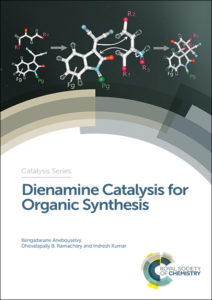
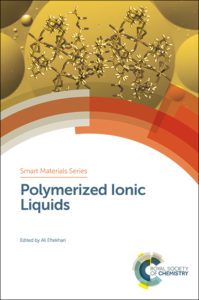 With the publication of
With the publication of 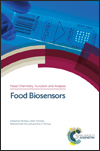
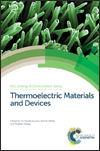
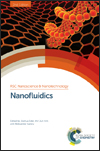
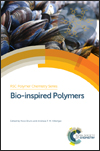
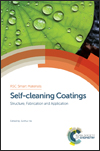
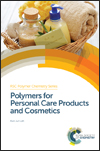
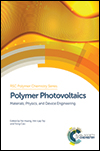
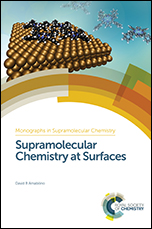
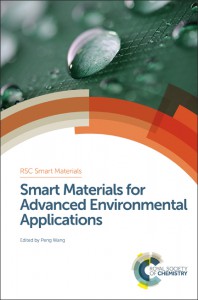 With the publication of
With the publication of 
